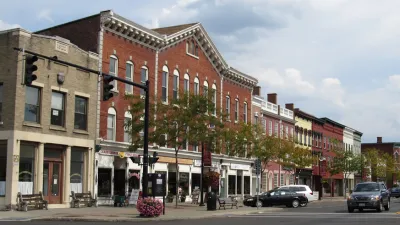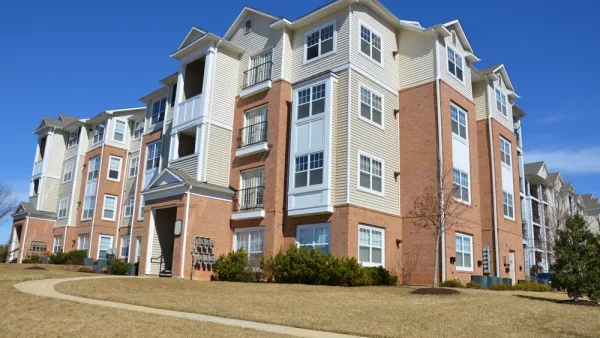What is it about historic downtowns that makes them so darned attractive, and unlike the placeless architecture spreading across our urban landscapes? Graeme Sharpe looks at the "basic recipe" that created these admired environments.

With ample images and diagrams, Sharpe illustrates the three key elements that allowed traditional building developers to use "their limitations as advantages, making the most out of known technology and social behavior."
First, structural engineering limitations and tax policies resulted in small frontages and deep buildings. "The overall effect of a traditional streetscape," says Sharpe, "is like walking through a well-curated art exhibit, where people can admire the buildings or the products in the glass storefronts....Perhaps even more importantly, the small sizes encouraged ordinary citizens to become developers....These self-developing streetscapes ensured that no single developer or architect controlled the evolution of the city."
Second, "[t]he party wall style of building, where adjacent buildings used the same structural wall to support their floors, was a very important money saving technique in traditional buildings....The owners typically used the savings to invest in attractive architecture with architectural flourishes, since it made business sense." This practice has generally been regulated out of existence.
Finally, the "incremental development paradigm," where owners had the ability to start small and expand their property upwards as needed was a cost-effective way to establish a business district, notes Sharpe. "The 'build at once' streetscape phenomenon is a recent invention, and only necessary because of the presence of parking requirements."
"It is up to us to figure out how to apply these concepts to our modern urban areas," he concludes. "But the key lessons here are to create a development environment where buildings can start small, expand gradually, and create mutually beneficial relationships with their neighbors."
FULL STORY: The Genius of Traditional Buildings

Analysis: Cybertruck Fatality Rate Far Exceeds That of Ford Pinto
The Tesla Cybertruck was recalled seven times last year.

National Parks Layoffs Will Cause Communities to Lose Billions
Thousands of essential park workers were laid off this week, just before the busy spring break season.

Retro-silient?: America’s First “Eco-burb,” The Woodlands Turns 50
A master-planned community north of Houston offers lessons on green infrastructure and resilient design, but falls short of its founder’s lofty affordability and walkability goals.

Test News Post 1
This is a summary

Analysis: Cybertruck Fatality Rate Far Exceeds That of Ford Pinto
The Tesla Cybertruck was recalled seven times last year.

Test News Headline 46
Test for the image on the front page.
Urban Design for Planners 1: Software Tools
This six-course series explores essential urban design concepts using open source software and equips planners with the tools they need to participate fully in the urban design process.
Planning for Universal Design
Learn the tools for implementing Universal Design in planning regulations.
EMC Planning Group, Inc.
Planetizen
Planetizen
Mpact (formerly Rail~Volution)
Great Falls Development Authority, Inc.
HUDs Office of Policy Development and Research
NYU Wagner Graduate School of Public Service




























